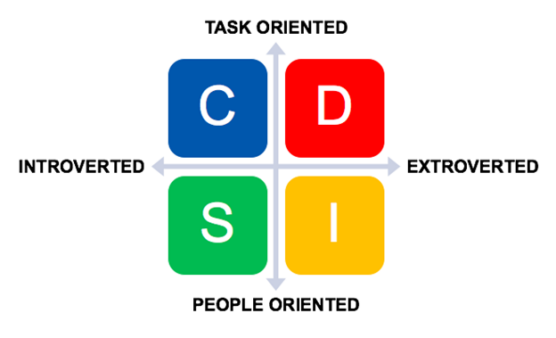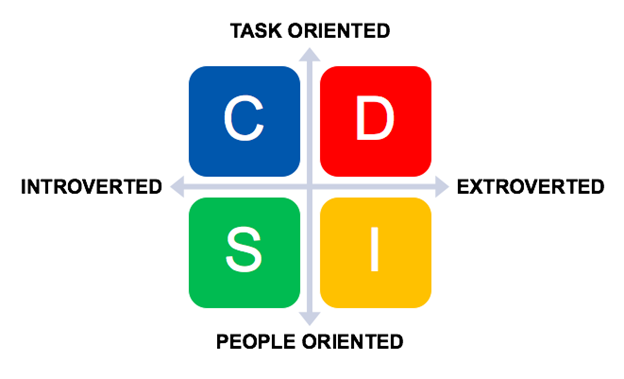Understanding people is integral to success in business. whether it is serving customers, others within your company or managing people. Providing staff with the training to observe behavioral traits that will enable improved interpersonal skills and communications inevitable generates improved teamwork, productivity and can translate into increased sales and profitability.
The goal is to generate an ROI on training.
Recently Channel Marketing Group, through ElectricalTrends, a sister publication of HVACR Trends, hosted a joint sales call workshop conducted by Greg Nanigian from GNA Training. Almost 50 people attended the free virtual workshop.
Based upon attendee feedback, we’ve asked Greg to conduct another workshop. On December 14th Greg will share an overview of the DISC profile model and highlight elements with attendees. I asked Greg to share thoughts regarding DISC.
DISC’s 4 Human Behavioral Traits
In the DISC model, psychologists have isolated four human behavioral traits. The acronym DISC stands for dominance, influencer, steady relator, and cautious compliant. To differing degrees, everyone utilizes all four of these communication and behavioral traits, but generally in our personality, one of them prevails over the rest. In a selling situation, if you understand the model, you can begin to identify the most prevalent communication and behavioral traits in the prospect and adjust your behavior and communication style to match. When you do so, you boost rapport and communication. Read more about DISC below and click here to participate at no charge.
Let’s look at each of the four groups in depth.
Dominance
Dominant-style individuals will be very direct, very candid, and in extreme situations, may even be perceived as being terse, uncaring, or cold. They are risk-takers and problem-solvers who tend to have high levels of personal confidence.
Certainly, when they’re not self-aware and are low in the other three traits (which we’ll get to in a moment), these prospects tend to want a win-lose outcome in the negotiation. Translation: They want the salesperson to lose and they want to win. You can usually identify a high dominant prospect when their primary emotion is anger. Another common identifier is that they always seem to be in a hurry. In dealing with the high dominant prospect, you need to be concise and direct. If they feel like you’re “sales techniquing” them, they will become uncomfortable to the point of anger and may want to end the meeting. Sensing that sales techniques are in the air could also cause them to become even more predatory in their negotiations.
Influencer
Next you have the Influencer. These prospects are talkative, energized by social interaction, colorful, and fun. Whereas with the eagle, a sense of humor might be considered a waste of time, with High-I influencers—the parrots—actually need to enjoy the experience of buying from you. Therefore, an appropriate series of jokes, and/or an appropriate social setting (such as having your meeting over lunch), is something that resonates with the High-I influencer. They need this socialization; it helps them to establish a bond.
Steady Relator
The third behavioral characteristic is the steady relator. Steady relators are loyal and yearn to build relationships based on trust. Before they’ll do business, they really want to trust the salesperson. Compared to the Dominant and Inluencer buyers, the steady relator has an introverted personality.
When dealing with these prospects, take the time to get to know them, their goals, and their pains. Let them get to know you too, but don’t share any of your pain. That goes for interactions with all four groups, by the way. Yes, you want to bond with prospects, but remember that your pain and problems are irrelevant to the sales process. This is not the place to get your emotional needs met. If a steady relator doesn’t feel like they can trust you, they will not likely do business with you unless they absolutely have no other choice.
Compliant
Finally, in the DISC model, you have the High-C, compliant. These individuals do their research. They gather reams of information before they make any decision.
All too frequently in a selling situation, everything boils down to price with the Compliant. Many salespeople find dealing with them to be the most difficult challenge because most salespeople are Dominants or Influencers—or some combination of the two—and they just don’t understand what makes Compliants tick.
These buyers tend to appear very logical — but behind it all, fear is the emotion that rules the decision-making process. Like the steady relators, these folks are introverted. They often take the longest to make decisions compared to the other three behavioral styles. (Dominants, by the way, are the quickest. Influencers are second quickest. Steady Relators take longer than Influencers, but Compliants take the longest of all.)
When dealing with this buyer, be patient. If you normally close your deals in one call, it makes a lot of sense to plan on dividing your approach up into a two-call sale for these prospects. In the first call, uncover pain as best as you can, but leave something behind for them to do some research on. Don’t give the Compliant a proposal right off the bat. Instead, leave this person somewhat curious and hand over a research report to read. In my world, the sales training world, I would give Compliants a set of mp3 recordings on the Sandler Selling System for them to listen to before I present my offer as to how I’m going to help them get rid of their pain. That’s how they operate. They want information to take home for review in order to make a decision. Then, on the second sales call, I might come back with my recommendations and my proposed agreement.
To learn more, participate in our free DISC workshop coming on December 14th at 11:30 Eastern to hear more about DISC and the up-coming workshop.
Next Steps
And if you are Massachusetts, ask Greg about the unique training grant you may qualify for and possibly receive up to $30,000 in free training per year (at least while they still have the program.) If you’re in another state, inquire about the Massachusetts program so you can research if your state offers a comparable program.
Give yourself, and your associates a holiday gift … the opportunity to learn more to help everyone perform at their best … and a skill that they can use beyond work. Sign up today and join us on December 14th.
